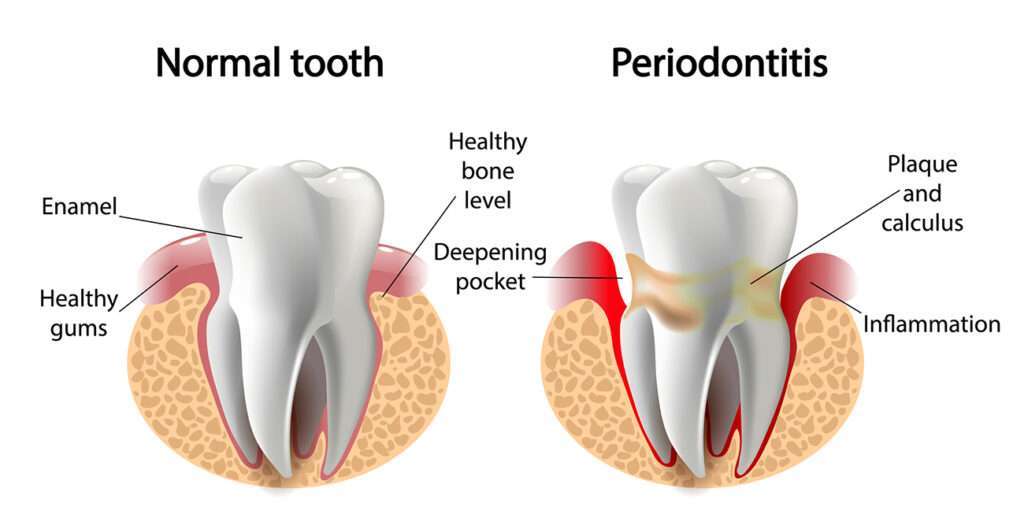
Periodontal Treatment
Periodontal Treatment
Home » Our Services » General Dentistry » Periodontal Treatment
Right Care Dental is the top dental clinic in Miami for you and your family. Gum disease or periodontal disease is one of the main causes why adults lose their teeth. This disease does not cause any pain, therefore, many people are unaware of it and it is diagnosed after it has crossed its first stage Gingivitis and reached the final sever stage periodontitis.
There are surgical as well as non-surgical treatments for periodontal disease. Non-surgical treatment is opted for when the gum disease is not very serious while surgical treatment is opted for when gum disease is more advanced.
After a thorough intra-oral exam, the doctor will be able to recommend and prescribe a treatment that specially designed to address the patients medical needs.

Periodontal Non-Surgical Treatment
When the condition of the gum disease is not severe and is in its initial stage, Gingivitis, then non-surgical treatment such as prophylaxes or full mouth debridement is recommended.
Scaling and Root Planning (SRP)
The first step to treating periodontitis is Scaling and Root Planning. Also known as SRP. As gum disease is caused by accessive plaque and tartar, this method is a way of removing the plaque and tartar from places the toothbrush cannot reach. Using an ultra-sonic scaling tool, the calculus is removed from both areas; under the gum line and the surface of the root.
But this treatment is not the ultimate solution. In order to keep your teeth healthy and free of gum disease, you must take care of your teeth after the treatment. For healthy and strong teeth you must brush and floss your teeth regularly, avoid intake of tobacco, see a dentist on a regular basis and of course maintain a healthy diet.
Antibiotic Therapy
Antibiotic treatment can be used in combination with SRP or periodontal surgery to help reduce bacteria in the periodontal pockets.
Arestin®
This minocycline antibiotic known as Arestin is placed in the pockets of the gums after an SRP treatment has been performed. We have seen great periodontal improvements after the application of this antibiotic. Results typically include a great reduction in depth within one month and generally can be maintained for nine months.
Schedule Your Partial and Full Dentures Appointment Today.
Right Care Dental can provide you with the Periodontal Non-Surgical Treatment in Miami. Schedule a visit by calling (786)-206-6021 or Scheduling a visit by filling out one of our online forms.

Contact Us Now!

Have A Question? We Can Help!
All data sent is secured with SSL encryption.
Have Questions?
Office Hours
-
Monday 9 AM - 5 PM
-
Tuesday 9 AM - 5 PM
-
Wednesday 9 AM - 5 PM
-
Thursday 9 AM - 5 PM
-
Friday 9 AM - 5 PM
-
Saturday CLOSED




